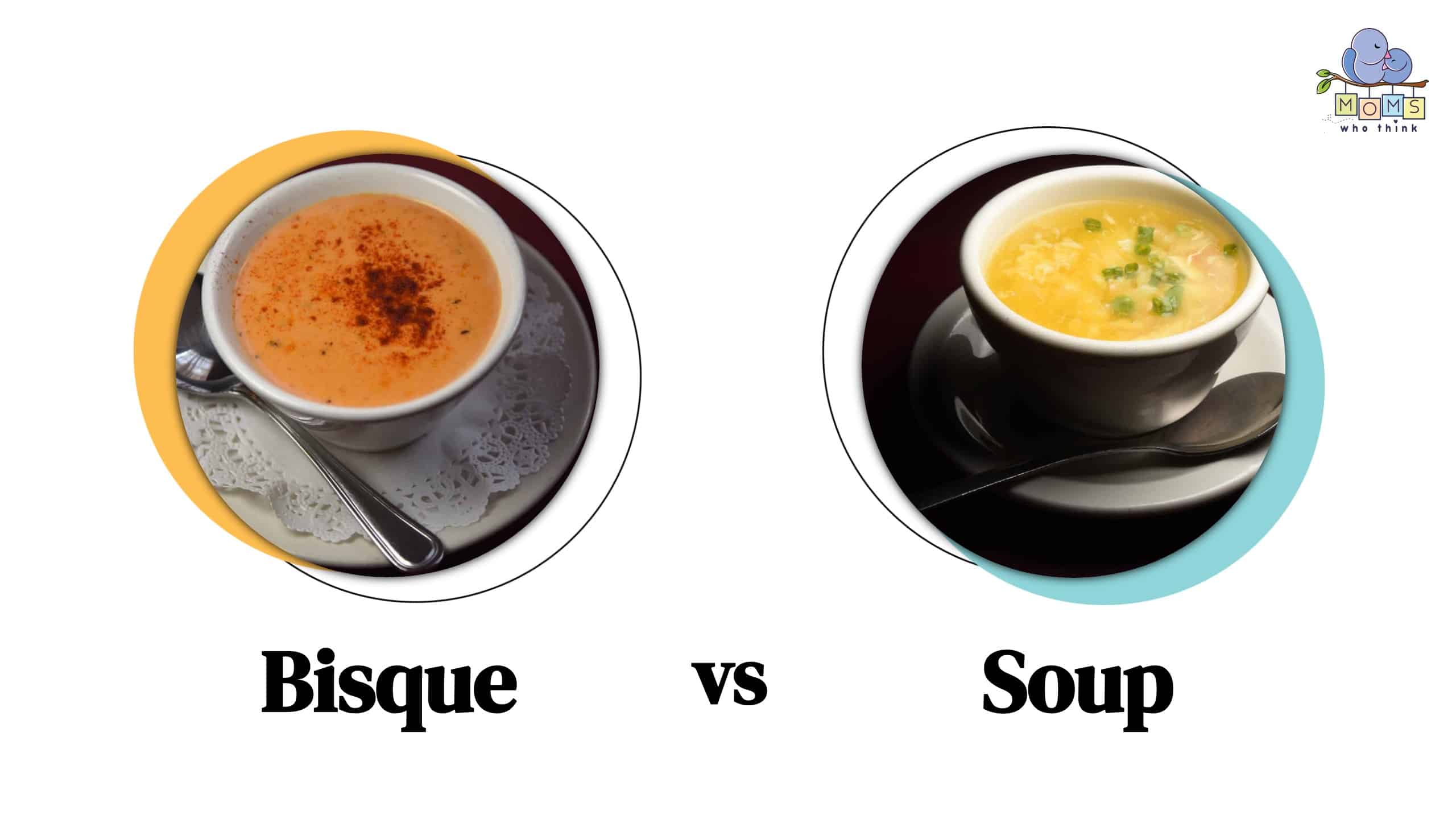Have you ever wondered what the distinction is between bisque and soup? Many people believe they are the same, yet numerous differences distinguish them. In this article, we will look at what soup and bisque are and their similarities and differences. By knowing what these two dishes have in common and what makes them different, you'll be better able to choose which one to serve at your next comfortable night in or exciting dinner party.
Bisque vs. Soup: What Is the Difference?
The main difference between bisque and soup is their texture. Bisque is famous for its smooth, creamy texture, achieved by combining all the ingredients and adding roux and cream. On the other hand, Soups can have various textures, ranging from clear broths to chunky, thick mixes that contain multiple ingredients.
Another distinction is the ingredients and their preparation. Seafood, such as crabs, is typically part of bisque recipes, and such recipes require boiling the seafood shells to make a tasty stock. Soups can include a broader range of ingredients, such as meats, beans, grains, and vegetables. You can prepare these ingredients in various ways, including boiling, simmering, or slow cooking.
What is Bisque?
Bisque is a French soup often made with shellfish like lobster, crab, shrimp, or crayfish. Pureed vegetables can also form a bisque with the consistency of cream. This meal was first served in France in the 17th century as a thick soup filled with game birds.
Bisque has changed over time to include more seafood, especially shellfish. However, people still dispute where the word “bisque” originates: the Bay of Biscay, a French province notable for its seafood, or the Old French word “bis” and “cuite,” which means “twice-cooked,” because bisque typically requires cooking the components twice.
Key Ingredients and Preparation Methods of Bisque
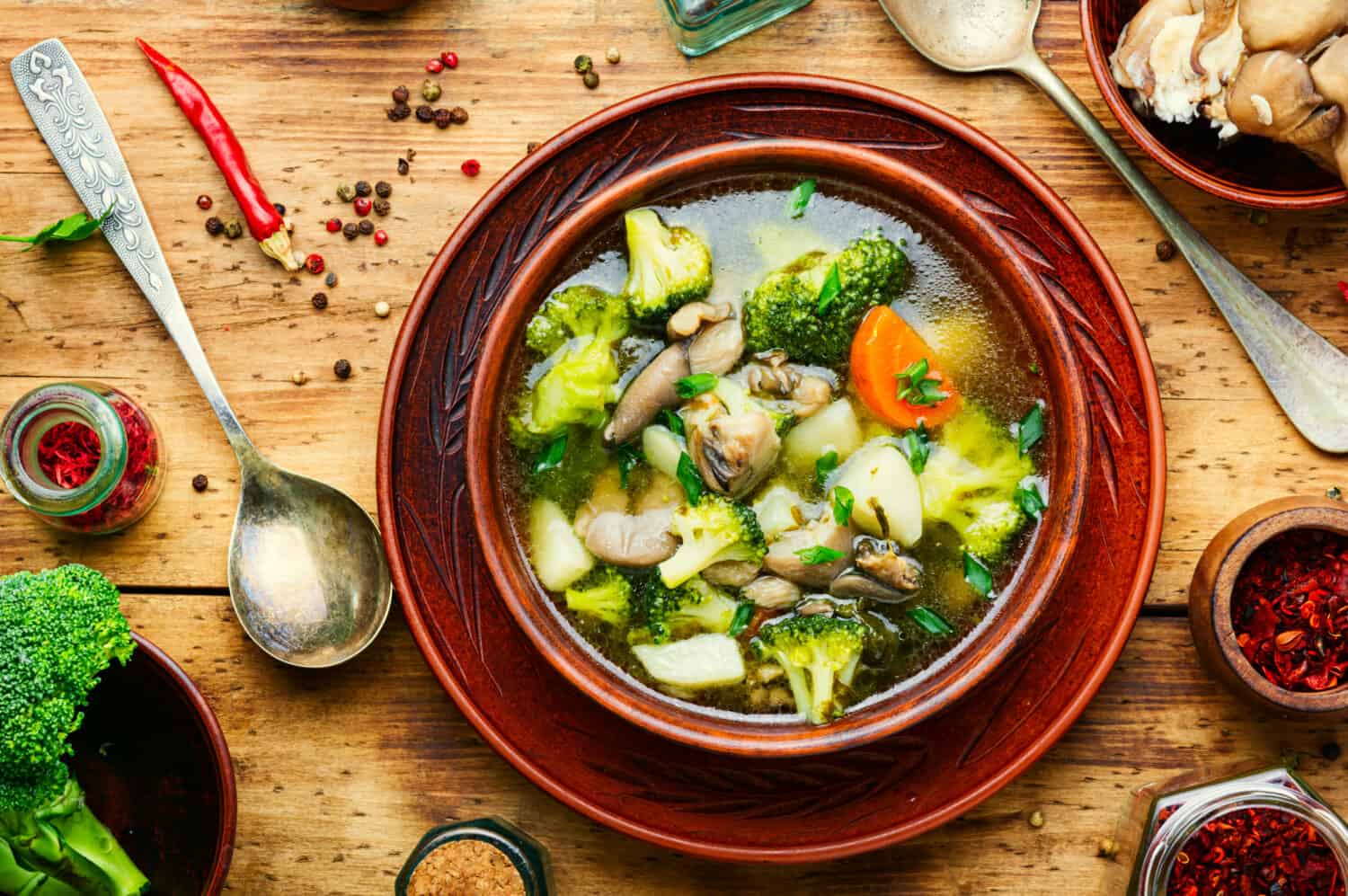
©Chatham172/Shutterstock.com
Bisque is a delicious food that is good to make any time of the year. You can use different ingredients and prepare bisque differently depending on what kind of dish you wish to make. Some things you should consider are:
- Seafood: Lobster, crab, shrimp, and crayfish are some popular shellfish that are typically part of the preparation of bisque. Adding shellfish makes the dish thick and gives it an oceanic flavor.
- Vegetables: Onions, celery, and carrots are all common choices for adding layers of flavor to bisque.
- Cream: Bisque needs heavy cream to give it a velvety texture and enrich the flavor.
- Herbs and spices: You can improve the taste of your dish by adding garlic, thyme, bay leaves, paprika, or cayenne pepper.
- Roux: A blend of grain and fat will give your dish a creamy texture.
Preparation Methods:
- Sauté the shellfish and fresh vegetables in butter or oil in a pan.
- Simmer the seafood shells with wine, vegetables, and herbs to make a stock with many flavors.
- Pour the stock through a strainer and mix it with a roux to make the bisque thicker.
- Add heavy cream to the mixture and boil until the flavors come together.
- Season the bisque to taste and serve it with toppings you like.
Common Types of Bisque
Bisque comes in various flavors to appeal to a wide range of tastes. Popular options include seafood dishes with lobster, crab, and shrimp. Lobster bisque is popular because of its rich, creamy texture and garnished with lobster meat.
There are vegetarian options for bisque, such as tomato and butternut squash, with fantastic flavors and textures. You can also make tomato bisque, cooked with tomatoes and topped with fresh basil. Butternut squash bisque has a silky texture and is sweet and tasty, perfect for a comforting vegetarian dish.
Nutritional Benefits of Bisque
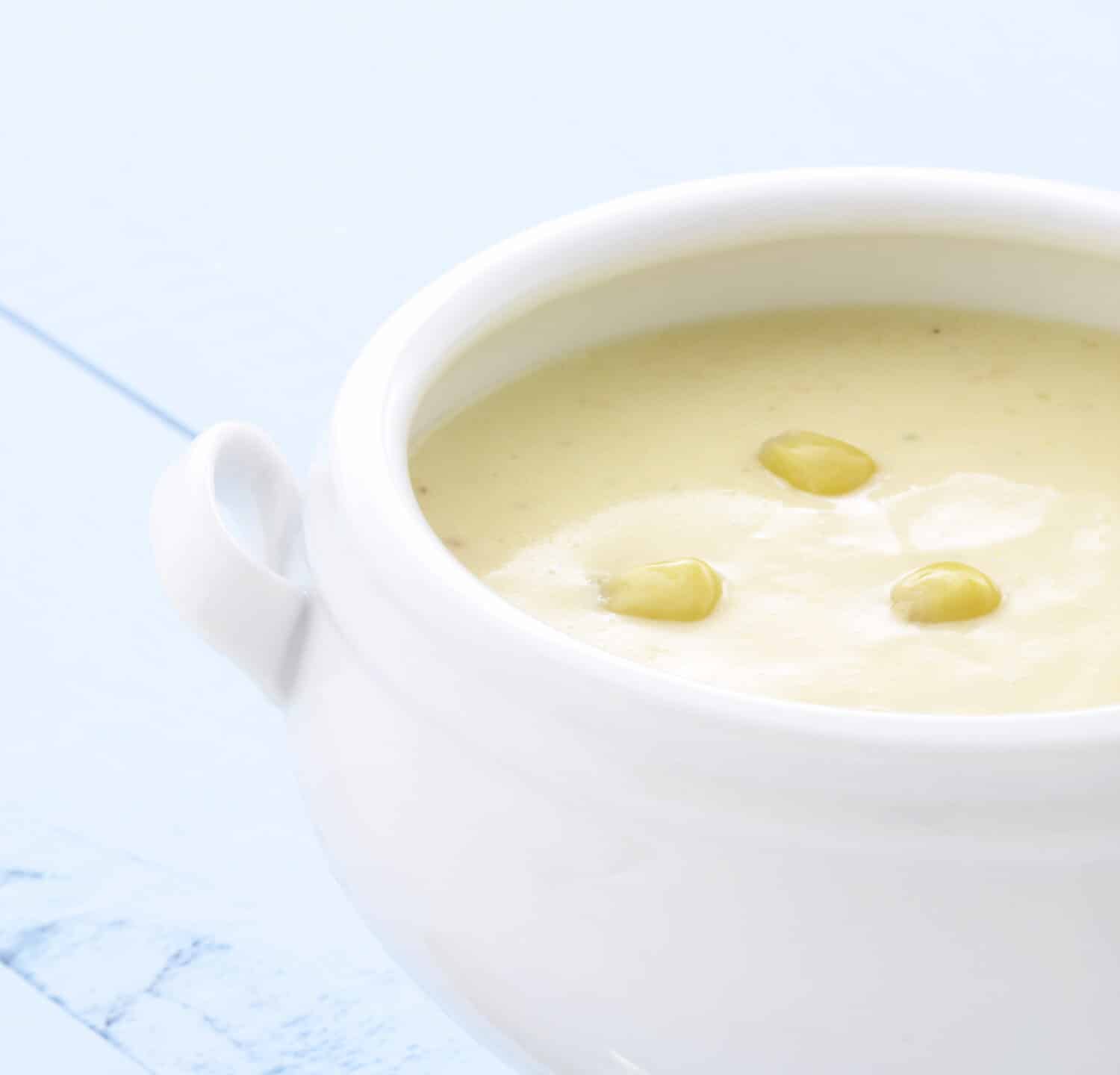
©Mix Tape/Shutterstock.com
Seafood bisque has a lot of protein and omega-3 fatty acids suitable for your heart and brain. In addition, vegetarian bisque is high in vitamins and minerals, which promotes immune system health while providing healthy skin. You can enjoy the wonderful texture of bisque while keeping a balanced nutritional profile by substituting low-fat cream for heavy cream.
What is Soup?
Soup is a liquid food created by heating various ingredients in water or stock. It can be either hot or cold and it's usually served before the main course. Many consider soup a comfort food, and it is delicious when it's cold outside.
Soup had existed since 20,000 BC when people started producing broths in mud and clay pots. Over time, soup went from a simple dish to a royal way to start a luxury buffet by adding different toppings, spices, and meat.
Key Ingredients and Preparation Methods of Soup
Soup is a wonderful and customizable meal that you can enjoy all year. The primary ingredients and preparation methods might differ depending on the type of soup you want to make. Here are some essential guidelines:
- Broth: This is the base of the soup and where the flavor comes from. Water, chicken broth, beef broth, vegetable broth, and other broths are some common choices.
- Vegetables: A good soup has several parts, but vegetables are essential to many soups. You can use any vegetables, like celery, potatoes, tomatoes, onions, carrots, or others.
- Protein: Chicken, beef, pork, or shrimp all provide protein to your soup.
- Herbs and spices: Use bay leaves, garlic, ginger, thyme, and other spices to flavor your soup.
- Noodles or grains: You don't have to add noodles, rice, or grains to soups, but doing so will make your dish fuller.
How to Prepare:
- Sauté the meat and vegetables in butter or oil in a saucepan.
- Bring the broth and spices to a low boil in a saucepan.
- Put the noodles or grains in the saucepan and cook them according to the instructions on the package.
- Simmer the soup on low heat until the vegetables get soft and the flavors have mixed.
- You can add fresh toppings to the soup and serve it.
Common Types of Soup
There are many types of soup, the most common being thins soup. Uncommon soups include consommé, purée, cream, chowders, and cold soup. Each soup has a great taste, but let's go in-depth into the qualities that put these soups in their classifications.
- Thin Soup: Prepared without the use of a thickening agent, this form of soup is typically a clear, flavorful, and nutrient-rich liquid.
- Consommé: Adding meat, herbs, and spice gives this soup an intense flavor.
- Purée Soup: Because starchy vegetables like potatoes and pumpkin get puréed into the soup, this soup gets made without a thickening agent.
- Cream Soup: Made with a purée of fish, meat, or vegetables and thickened with cream.
- Chowders: A chowder is a hearty soup with a tomato or milk base thickened with potatoes.
Nutritional Benefits of Soup
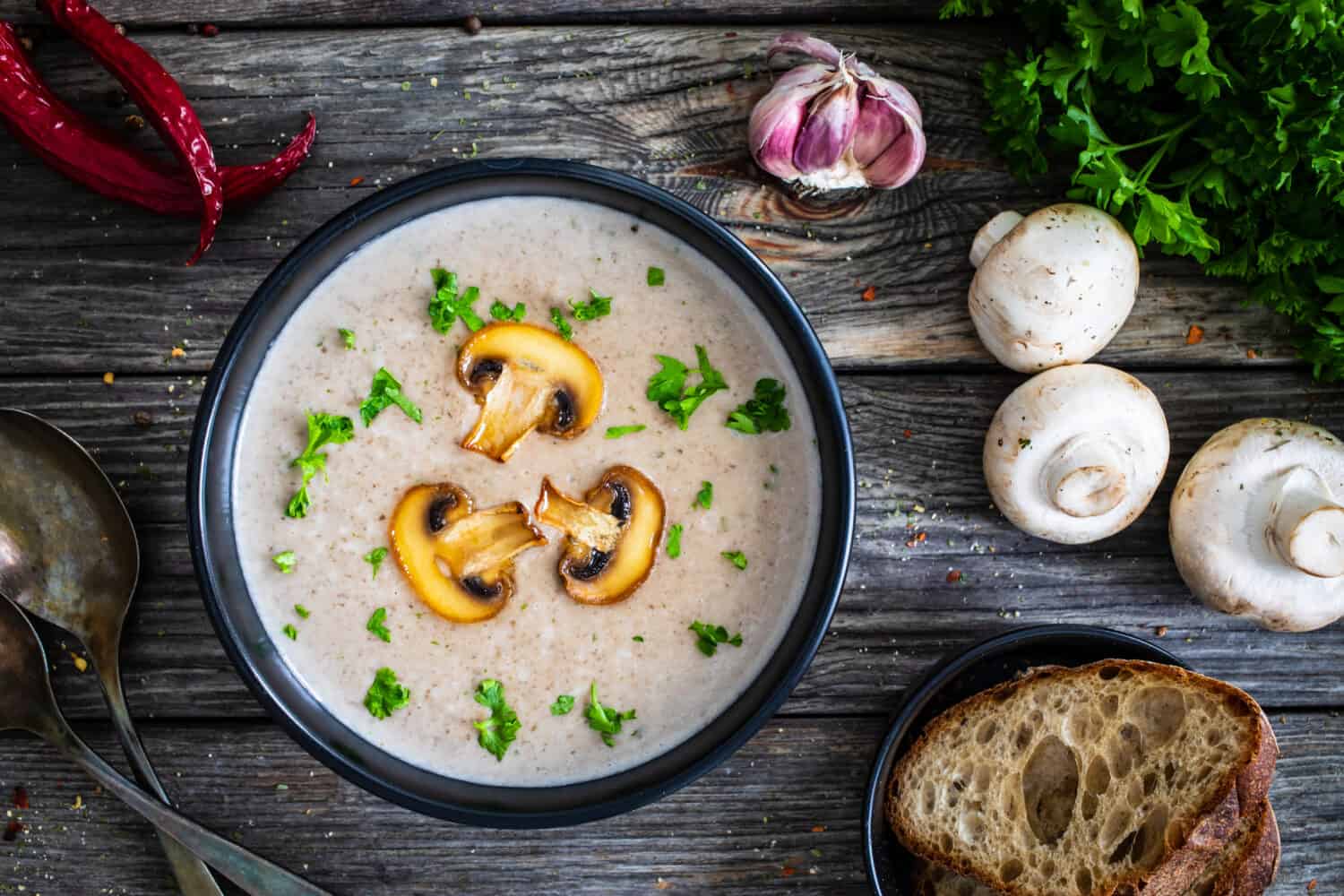
©Chatham172/Shutterstock.com
Soup, depending on the ingredients, has the potential to be incredibly healthy and beneficial to you. Broths prepared from vegetables, bones, or meat contain vitamins, nutrients, and minerals that are good for your health and immune system. Soup's high fiber content also makes you feel full, which can aid in weight loss.
Bisque vs. Soup: How Are They Similar?
Bisque and soup have various similarities, starting with the fact that they are both liquid-based foods served warm or hot. Both comprise multiple ingredients, including vegetables, proteins, and seasonings, resulting in diverse flavor profiles and textures. In addition, depending on the ingredients and the size, bisque and soup can be served as appetizers or main dishes.
Another thing that bisque and soup have in common is how cooks can alter them to fit different tastes or nutritional needs. Both are easy to make vegetarian, vegan, or gluten-free by changing the ingredients or adding substitutions such as vegetable broth, dairy substitutes, or gluten-free thickeners. Also, both bisque and soup can be cooked ahead of time and placed in the refrigerator for later. Storing this dish makes it easy to use when planning meals.
Bisque vs Soup Nutrition
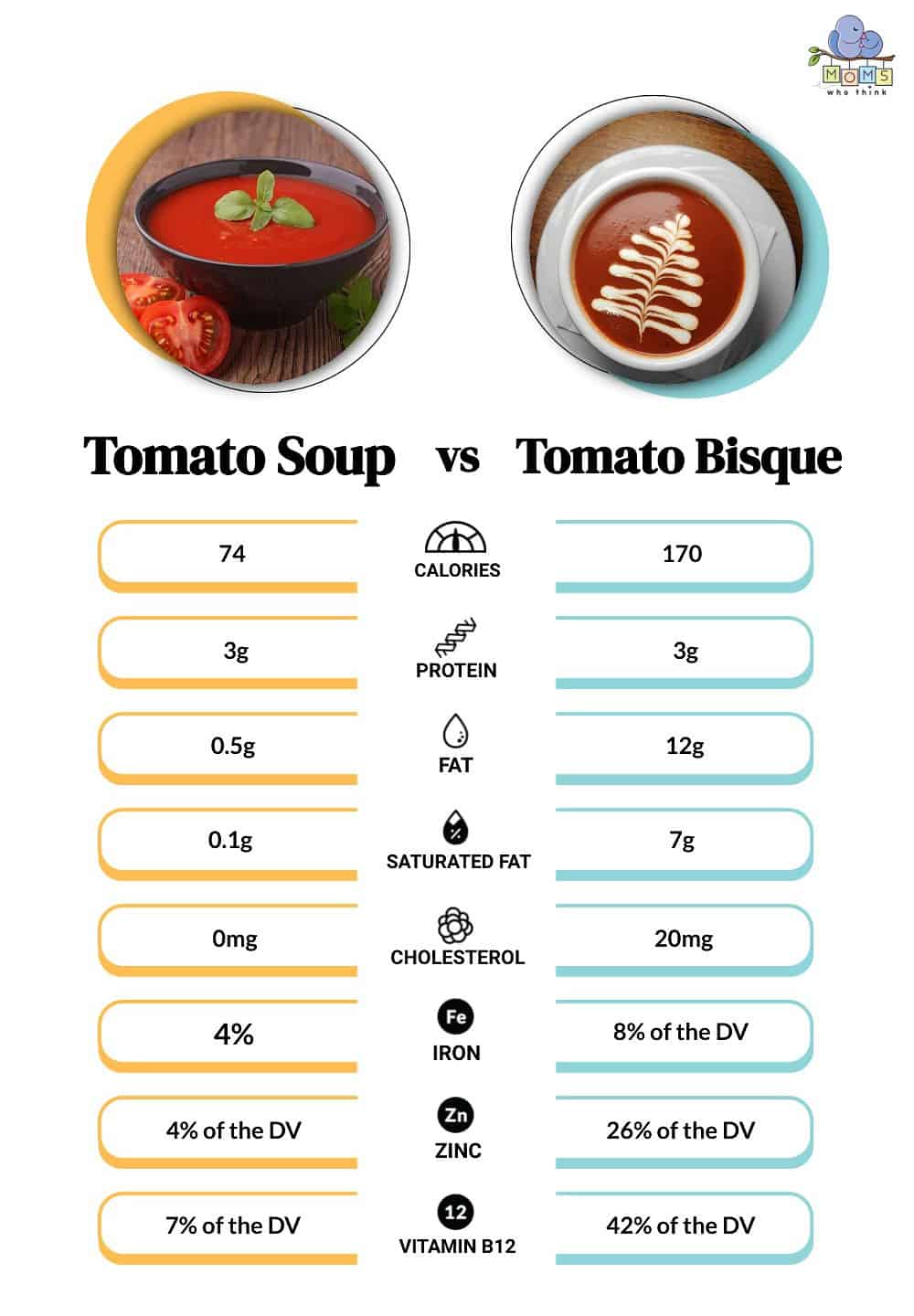
©
Generally, bisques have higher calories and fat content when compared to soups. That's because they often have added creams or other thickening agents. In the table above we've compared tomato bisque and soup, which are both very popular. As you can see, the tomato bisque has more calories and fat. Both soups and bisques can have their nutritional values skewed heavily by added ingredients like chicken, fish, or vegetables.
Bisque Recipes
Soup Recipes
Print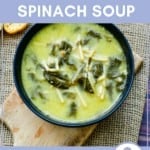
Creamy Chicken Spinach Soup
- Total Time: 45 minutes
Ingredients
- 1 (9 ounce) package refrigerated cheese tortellini
- 1 (14½ ounce) can fat-free, reduced-sodium chicken broth
- 2 (10¾ ounce) cans reduced-fat, reduced-sodium cream of chicken soup
- 1 (10 ounce) package frozen chopped spinach, thawed and squeezed dry
- 1 (9 ounce) chicken breast, chopped and cooked
- 2 cups fat-free milk
- ½ teaspoon dried thyme
Instructions
- Cook tortellini according to package directions, using 1 can broth instead of water. Add soup and remaining ingredients stirring well.
- Bring to a boil; cover, reduce heat to medium, and cook until thoroughly heated.
- Prep Time: 15 minutes
- Cook Time: 30 minutes
Final Thoughts
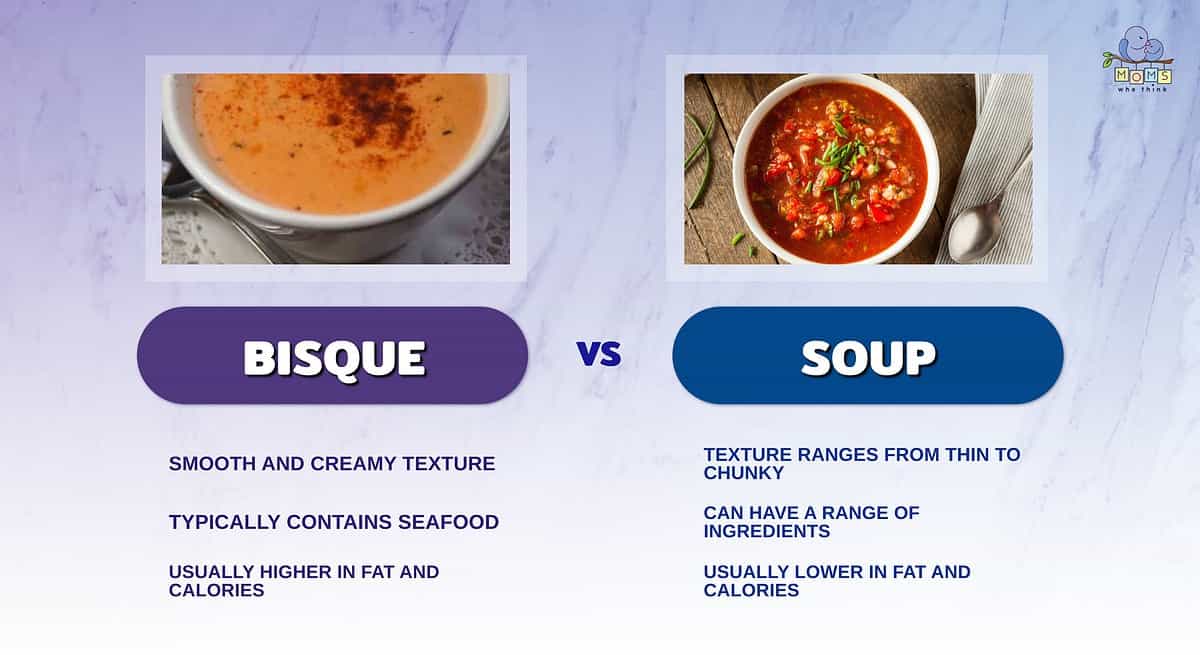
- Bisques are known for their smooth, creamy texture. Soups, on the other hand, can be light and thin or thick and chunky. They offer a lot of options for a wide variety of preferences.
- A bisque usually has seafood in it, but this isn't a requirement. Soups, on the other hand, are made with an extremely wide variety of ingredients.
- Soup is better for those watching their fat and calories, since it's usually lower in those areas than bisque. If you want to eat bisque on a diet, make sure you do so in moderation.
To summarize, while bisque and soup have some similarities, such as being liquid-based and adaptable to different diets, they differ in texture, ingredients, and cooking methods. Bisque gets distinguished by its smooth, creamy texture and is often cooked with seafood, whereas you can make soup with various textures and ingredients. Understanding these distinctions will help you select the ideal dish for any occasion, whether searching for a rich, silky bisque or a comforting soup.
